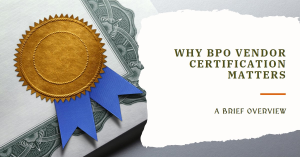Estimated reading time: 8 minutes
Key Takeaways
- Master the metrics: understanding CSAT, FCR, AHT, and QoS pinpoints strengths and weaknesses for targeted optimisation.
- Align people and process: accurate staffing and disciplined workforce management keep queues short and costs controlled.
- Coach continuously: personalised, ongoing coaching and real-time feedback drive measurable, sustained improvement.
- Leverage technology: AI automation and predictive analytics reduce workload, improve decisions, and streamline resolutions.
- Support agents: investing in well-being and clear career paths boosts engagement and performance.
Table of Contents
In a fiercely competitive business landscape, the need to improve call centre performance has never been more pressing. As customer expectations rise and demand for exceptional service grows, organisations must optimise their call centre operations to stay ahead. Effective optimisation is not merely about cutting costs, it focuses on delivering superior customer experiences that nurture loyalty and support business growth.
This guide sets out proven strategies, essential metrics, and innovative technologies that can transform a call centre’s efficiency and effectiveness. If you face high abandonment rates, low customer satisfaction, or agent turnover, the solutions below will help tackle these issues and lift performance to a higher level.
Understanding Key Call Centre Metrics
Before applying improvement strategies, it is essential to understand the metrics that reveal your call centre’s current status. These key performance indicators (KPIs) uncover strengths and weaknesses, enabling targeted optimisation.
Customer Satisfaction Score (CSAT)
Customer satisfaction score measures how happy customers are with service interactions. Satisfied customers remain loyal and share positive feedback, directly influencing revenue.
CSAT figures are gathered through post-call surveys that ask customers to rate their experience on a numerical scale. These ratings supply direct insight into agent conduct and service quality.
To elevate CSAT and strengthen call centre performance, adopt:
- Immediate feedback tools that capture sentiment straight after an interaction
- Streamlined resolution processes that limit customer effort
- Focused training that teaches empathetic communication
- Regular reviews of low-scoring calls to uncover systemic issues
CSAT is more than a statistic, it reflects the emotional response customers feel after each interaction and plays a decisive role in their future purchasing choices.
First Call Resolution (FCR)
First call resolution tracks the proportion of enquiries solved during the first contact. Achieving a high FCR raises satisfaction and trims operating costs because customers need not call back.
Proven ways to lift FCR:
- Coaching programmes that sharpen problem-solving skills
- A knowledge base with instant access to accurate data
- Smart staffing that blends specialist and generalist agents
- Clear escalation paths for complex matters
Strong FCR figures cut repeat contacts, reduce queue length, and reassure customers that their concerns will be resolved promptly.
Average Handle Time (AHT)
Average handle time records the full duration of a customer interaction, including talk time, hold time, and post-call work. The goal is appropriate, not minimal, duration. Excessively long calls hint at process faults, inadequate training, or system limits, whereas rushed calls risk incomplete resolutions.
Improve AHT without harming service quality by:
- Automating routine tasks and data entry
- Supplying real-time coaching and decision support
- Routing calls to agents with matching expertise
- Simplifying after-call documentation while preserving accuracy
Balanced AHT keeps queues manageable and maintains service depth.
Quality of Service (QoS)
Quality of service examines consistency, accuracy, professionalism, and adherence to policy. Inconsistency breeds distrust, even when other metrics look strong.
Enhance QoS through:
- Structured quality assurance with clear criteria
- Frequent call evaluations using standard scoring
- Continuous customer feedback loops
- Targeted coaching based on monitoring insights
Consistent quality establishes credibility and forms the foundation of every improvement initiative.
Strategies for Call Centre Optimisation
Meaningful progress demands a structured approach covering staffing, technology, and process design.
Call Centre Staffing
Accurate staffing safeguards both customer satisfaction and cost control. Too few agents stretch queues; too many waste budget.
Adopt these practices:
- Demand forecasts built on historical data, seasonal trends, and marketing plans
- Recruitment focused on cultural fit and aptitude for service roles
- Flexible shift patterns that reflect intraday volume swings
- Thorough induction and continuous skill development
Treat staffing as a strategic discipline to maintain dependable performance.
Workforce Management
Workforce management systems align staff availability with customer demand. Effective programmes blend forecasting, scheduling, real-time adherence checks, and performance tracking.
Key components include:
- Scheduling tools that consider skills, preferences, and predicted volumes
- Live adherence dashboards to spot cover gaps instantly
- Performance visualisations that display individual and team metrics
- Automated shift-bidding and holiday request workflows that balance business needs with employee preferences
Strong workforce management lowers wait times, boosts engagement, and contains overtime expense.
Call Centre Coaching
Ongoing coaching sharpens skills, lifts morale, and drives sustained improvement. Unlike periodic training, coaching is personalised and continuous.
Recommended methods:
- Prompt, specific feedback drawn from actual calls
- Scenario-based sessions that mimic demanding customer situations
- AI-guided tools that highlight performance gaps and propose tailored plans
- Peer mentoring that pairs new agents with proven performers
Investing in coaching signals commitment to employee growth and produces confident agents who resolve issues swiftly.
AI Call Centre Automation
Artificial intelligence reduces workload and refines decision-making. Effective deployments include:
- Automated summaries that capture key details and save time on notes
- Predictive modelling to forecast volume and spot emerging service risks
- Natural-language IVR that handles routine enquiries swiftly
- In-call guidance that suggests next best actions or relevant knowledge-base articles
AI tools raise efficiency, shorten queues, and standardise service delivery.
Predictive Call Centre Analytics
Predictive analytics turns historical data into foresight. By highlighting patterns in contact reasons, volume, and customer behaviour, it empowers proactive management.
Implement analytics by:
- Mining past interaction data for volume, duration, and outcome trends
- Adjusting schedules ahead of forecast spikes
- Tailoring training to anticipated challenges
- Flagging churn-risk customers for proactive outreach
Centres that master predictive analytics allocate resources more effectively and deliver smoother customer experiences.
Enhancing Call Centre Agent Performance
Agent performance affects every metric. A skilled, motivated team resolves issues quickly and leaves customers satisfied.
Techniques to Boost Agent Performance
Successful programmes mix skill building, engagement, and recognition:
- Clear performance benchmarks linked to incentives
- Micro-learning modules that reinforce single skills daily
- Role-play exercises that build confidence in difficult scenarios
- Gamified scoreboards that foster friendly competition
- Scheduled wellness breaks to manage cognitive load
- Career-path planning to show progression opportunities
- Open feedback channels that let agents suggest process improvements
Supporting Mental Well-Being
Customer service roles carry emotional strain. Safeguarding mental health lowers absenteeism and turnover while sustaining quality. Provide:
- Quiet zones for decompression
- Access to confidential counselling
- Workshops on stress management techniques
- Rotating assignments to limit exposure to challenging contacts
A workforce that feels supported remains engaged and delivers empathetic service.
Leveraging Continuous Feedback
Real-time analytics and speech recognition can deliver instant feedback without micromanagement. By surfacing actionable insights during or immediately after calls, these tools help agents refine technique before habits set in.
- Dashboards showing sentiment analysis and compliance flags
- Alerts when talk-time or hold-time thresholds are exceeded
- Post-interaction reviews that highlight exemplary phrasing
Continuous feedback tightens improvement cycles and builds a culture of incremental progress.
Measuring Success and Adjusting Strategy
Improvement programmes must be data-driven. Combine quantitative KPIs with qualitative feedback to gain a full picture of performance.
- Track CSAT, FCR, AHT, and QoS monthly.
- Analyse trends against staffing levels, marketing campaigns, and product launches.
- Conduct focus groups with agents to uncover hidden process hurdles.
- Review technology adoption rates to ensure tools are used effectively.
- Adjust targets quarterly to reflect business priorities and market shifts.
Regular review prevents drift and keeps the call centre aligned with organisational goals.
Final Thoughts
Consistent, high-quality call centre performance does not hinge on one tactic. Success comes from aligning people, processes, and technology, supported by clear data and a culture that prizes customer experience. By applying the metrics, strategies, and practices outlined here, any organisation can raise service quality, contain costs, and strengthen customer loyalty.
FAQs
Which call centre metrics matter most and why?
CSAT, FCR, AHT, and QoS provide a balanced view of customer happiness, resolution effectiveness, efficiency, and consistency. Together, they reveal where processes, training, or tools need optimisation.
How can we raise First Call Resolution without inflating costs?
Focus on agent coaching, an accurate and accessible knowledge base, smart routing to the right expertise, and clear escalation paths. These reduce repeat contacts while keeping interactions efficient.
What is the best approach to improve Average Handle Time?
Aim for appropriate, not minimal, duration. Automate routine tasks, provide in-the-moment coaching, match calls to skilled agents, and streamline after-call work to maintain quality while trimming waste.
Where does AI deliver the fastest wins in a call centre?
AI-driven call summaries, predictive volume forecasting, natural-language IVR, and in-call guidance quickly reduce workload, speed up resolutions, and standardise service across teams.
How often should we reassess targets and programmes?
Track core KPIs monthly, review trends against business events, gather qualitative agent feedback, and adjust targets at least quarterly to stay aligned with changing priorities.







